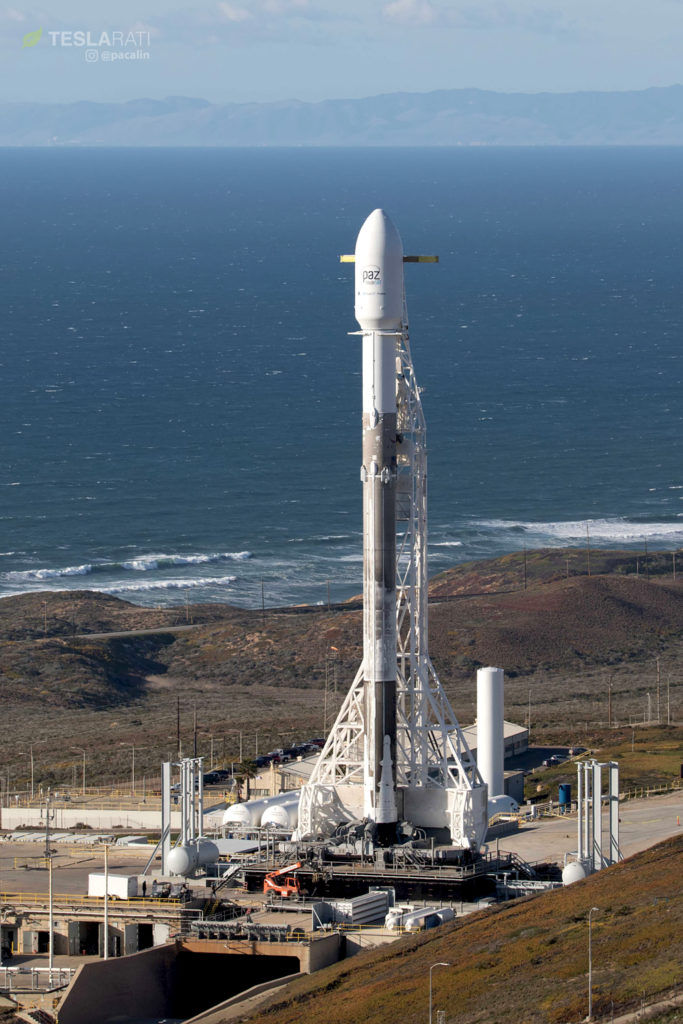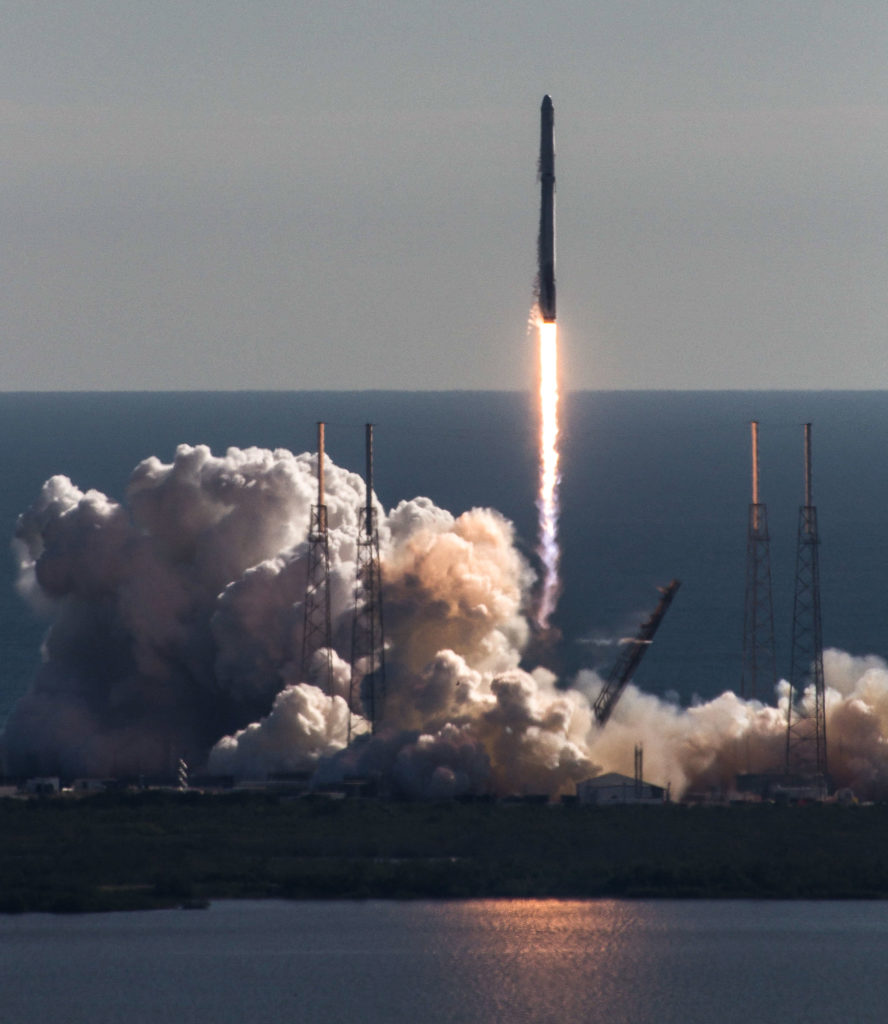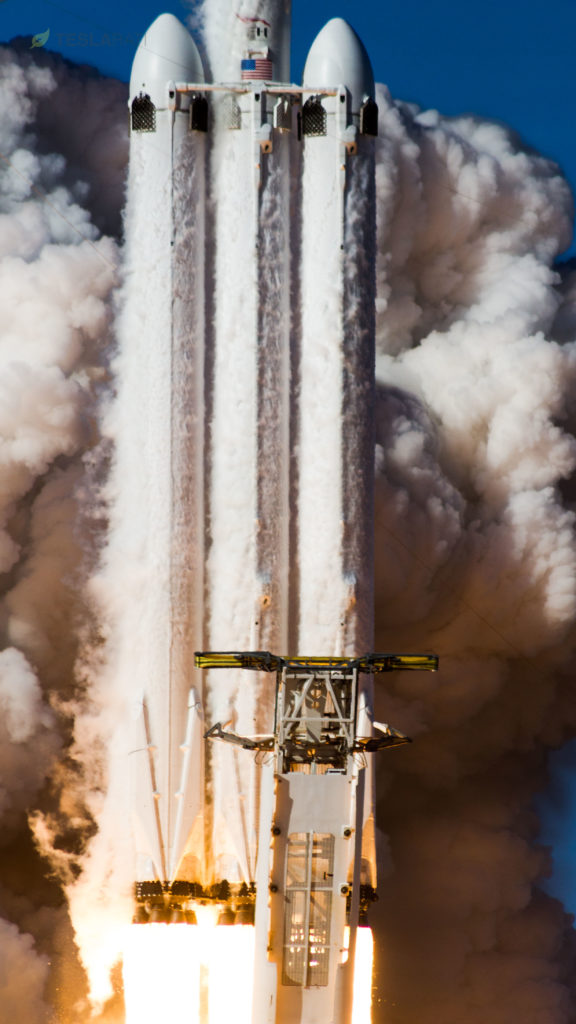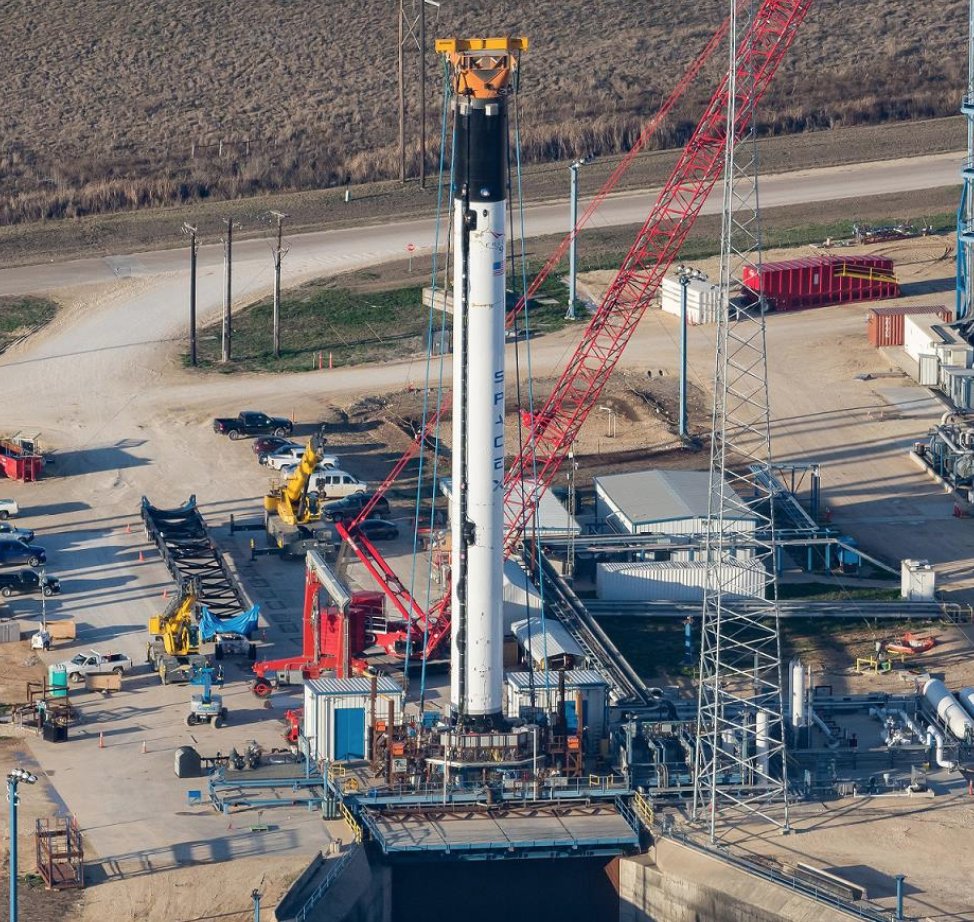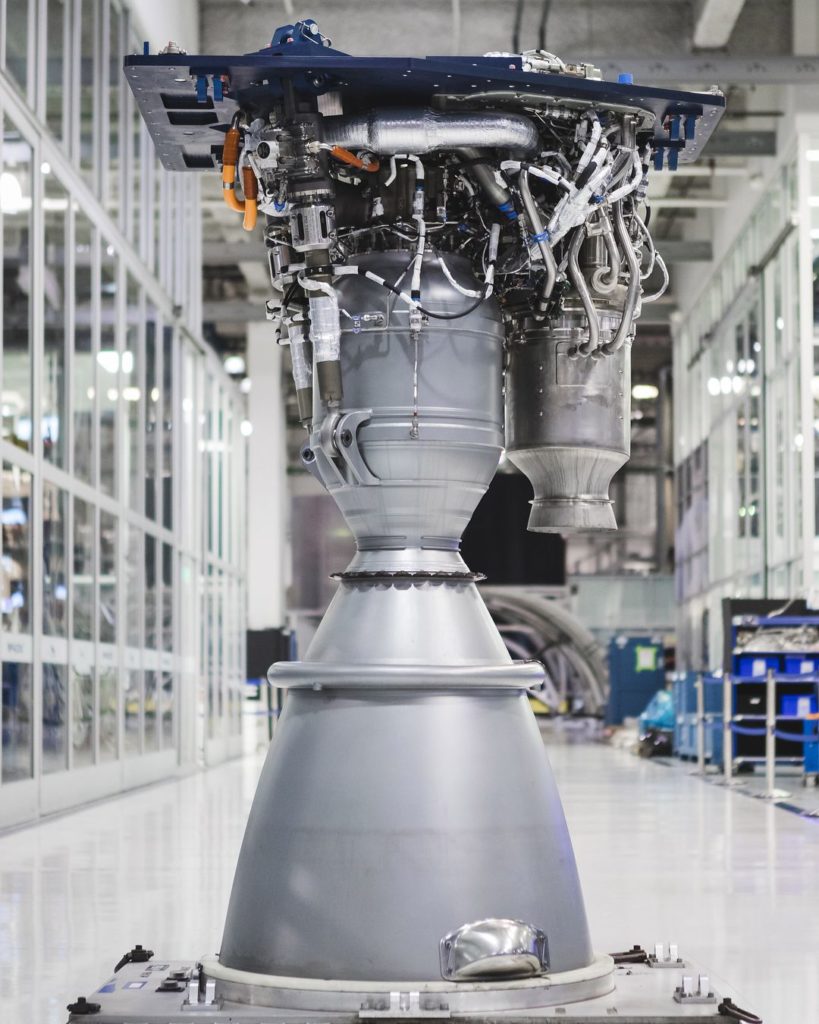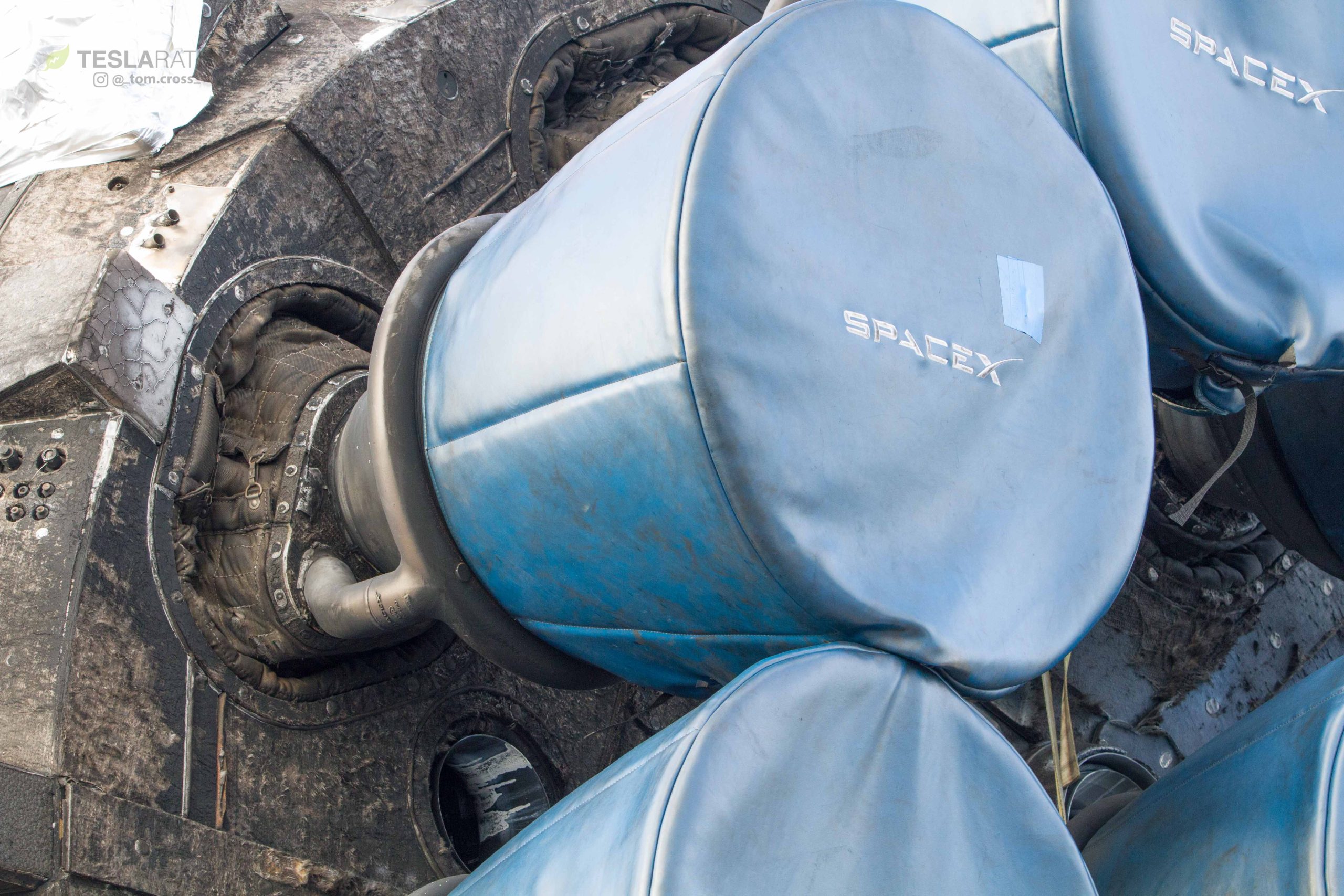
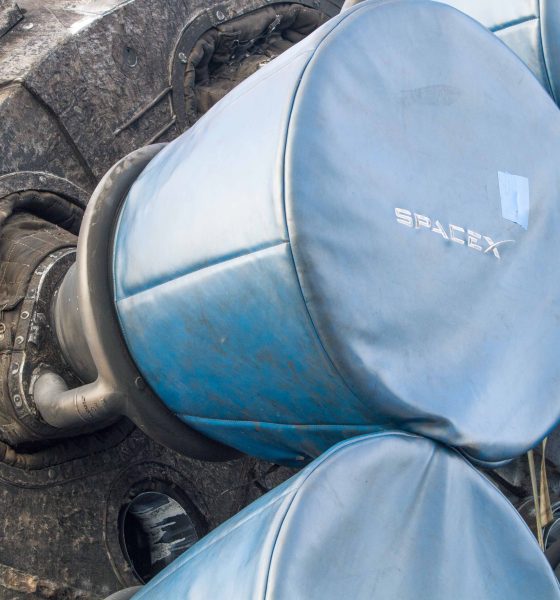
News
SpaceX aims for 3 rocket launches in a single week, 6 launches in 1 month
Tailing an intense February that saw SpaceX successfully complete inaugural launches of both Falcon Heavy and two Starlink prototype satellites, the next three weeks of March are likely to be relatively quiet. However, by all appearances, SpaceX is preparing for a frenetic end-of-month that could include three Falcon 9 launches from three separate SpaceX launch pads, all in a single week, and as many as six launches total between March 29 and April 30.
If successful, this series of missions would smash all of SpaceX’s past launch cadence records – six launches in little more than a single month, two reused flights in four days, three launches in one week, and two East coast launches in three days, not to mention the debut of Falcon 9 Block 5. To put this level of activity in perspective, SpaceX could complete the equivalent of four months or 33% of all of their 2017 launches in a single month. SpaceX’s aggressive goal of 30 launches in 2018 still means that the company could complete a full 1/5th of their scheduled manifest in less than five weeks, a cadence that – if maintained for a full year – would equate to 60-70 launches in 12 months.

50 launches of Falcon 9 in seven and a half years. Graphic produced by Reddit user ethan829. (Reddit /u/ethan829)
Three launches, three pads, seven days
Beginning on March 29, SpaceX’s next series of launches will kick off with the flight-proven Iridium-5 mission tasked with placing 10 Iridium NEXT communications satellites into LEO from Vandenberg Air Force Base. Three days later (April 2), a flight-proven Cargo Dragon and Falcon 9 booster are scheduled to lift off from LC-40 on the East coast, likely followed by the first stage’s second landing at LZ-1. Finally, SpaceX will return Pad 39A to its first single-stick Falcon 9 launches since February’s inaugural Falcon Heavy flight with Bangabandhu-1, the Bangladesh government’s first-ever geostationary satellite. Bangabandhu-1 will also mark the inaugural launch of SpaceX’ potentially game-changing Falcon 9 upgrade, and that invaluable pathfinder booster will almost certainly find its way to a soft landing aboard the Atlantic drone ship Of Course I Still Love You (OCISLY).
Following those three launches and around ten days of quiet, SpaceX will launch NASA’s TESS, a scientific probe tasked with searching for planets beyond our solar system, from Florida’s LC-40, April 16. After another ten-day “break,” the company will jump back to the West coast to place another five Iridium NEXT satellites (and two NASA science payloads) into orbit on April 28. On April 30, just two days later, SES-12 is scheduled for an East coast launch to geostationary transfer orbit aboard a reused Falcon 9.
- SpaceX intends to launch three Falcon 9s from all three of its pads in just seven days. Pictured here their VAFB pad in California. (Pauline Acalin)
- A reused Falcon 9 clears the lightning towers of Florida’s Launch Complex-40 (LC-40). (Tom Cross)
- Falcon Heavy explodes off of Pad 39A in a spectacle of fire, Roadster in tow. (Tom Cross)
A new era of rapid reusability rears its head
Put simply, this is an extreme pace for orbital launches, and would be an absolutely staggering achievement for SpaceX even if Hispasat’s week-long delay extends that month-long period to six or so weeks for a half-dozen launches. While almost certainly a coincidence, this rapid succession of launches happens to coincide with the inaugural April 5th launch of SpaceX’s next-generation Falcon 9, an upgrade meant to enable cheap and rapid reuse of the rocket’s first stage. With Block 5, it is entirely conceivable that a Falcon 9 booster could land at LZ-1, be transported back to the launch pad after a brief once-over, and conduct another launch in a matter of days, at a meaningful cost of little more than the second stage and payload fairing (for the time being, at least). Of course, those minimal costs will at first help SpaceX recoup its considerable investments in reusability, but they can be expected to trickle down to the customer within a year or two (~30-60 launches) of Block 5’s introduction.
- SpaceX Block 5 Falcon9 at McGregor, Texas [Credit: Chris G – NSF via Twitter, Reprinted with permission from NASASpaceflight.com]
- A matte-silver Block 5 Merlin 1D rocket engine seen preparing to leave SpaceX’s Hawthorne factory for testing in Texas. (SpaceX)
Ultimately, Falcon 9 Block 5 will give SpaceX an unprecedented amount of capital flexibility. Once the upgrade has phased out older Falcons, the company will have a huge amount of freedom to constantly strike a balance between competitive pricing and profit margins. In other words, no launch provider on Earth will be able to lowball SpaceX on cost without SpaceX’s conscious acquiescence, and every single recoverable launch of a Block 5 will equate to profit margins previously inconceivable for the company. However, rather than lining the pockets of military-industrial complex profiteers, those profits will help SpaceX both pay off R&D debts and intensively invest in more thrilling hardware developments, including Crew Dragon, Starlink, Raptor, BFR/BFS, and beyond. SpaceX does not intend to become rich and lazy in their success — they mean to develop technology that will provide affordable internet on a global scale, return humanity to the moon, and one day establish a permanent and self-sustaining city on Mars.
Follow us for live updates, behind-the-scenes sneak peeks, and a sea of beautiful photos from both our East and West coast photographers.
Teslarati – Instagram – Twitter
Tom Cross – Twitter
Pauline Acalin – Twitter
Eric Ralph – Twitter

News
Tesla FSD fleet is nearing 7 billion total miles, including 2.5 billion city miles
As can be seen on Tesla’s official FSD webpage, vehicles equipped with the system have now navigated over 6.99 billion miles.

Tesla’s Full Self-Driving (Supervised) fleet is closing in on almost 7 billion total miles driven, as per data posted by the company on its official FSD webpage.
These figures hint at the massive scale of data fueling Tesla’s rapid FSD improvements, which have been quite notable as of late.
FSD mileage milestones
As can be seen on Tesla’s official FSD webpage, vehicles equipped with the system have now navigated over 6.99 billion miles. Tesla owner and avid FSD tester Whole Mars Catalog also shared a screenshot indicating that from the nearly 7 billion miles traveled by the FSD fleet, more than 2.5 billion miles were driven inside cities.
City miles are particularly valuable for complex urban scenarios like unprotected turns, pedestrian interactions, and traffic lights. This is also the difference-maker for FSD, as only complex solutions, such as Waymo’s self-driving taxis, operate similarly on inner-city streets. And even then, incidents such as the San Francisco blackouts have proven challenging for sensor-rich vehicles like Waymos.
Tesla’s data edge
Tesla has a number of advantages in the autonomous vehicle sector, one of which is the size of its fleet and the number of vehicles training FSD on real-world roads. Tesla’s nearly 7 billion FSD miles then allow the company to roll out updates that make its vehicles behave like they are being driven by experienced drivers, even if they are operating on their own.
So notable are Tesla’s improvements to FSD that NVIDIA Director of Robotics Jim Fan, after experiencing FSD v14, noted that the system is the first AI that passes what he described as a “Physical Turing Test.”
“Despite knowing exactly how robot learning works, I still find it magical watching the steering wheel turn by itself. First it feels surreal, next it becomes routine. Then, like the smartphone, taking it away actively hurts. This is how humanity gets rewired and glued to god-like technologies,” Fan wrote in a post on X.
News
Tesla starts showing how FSD will change lives in Europe
Local officials tested the system on narrow country roads and were impressed by FSD’s smooth, human-like driving, with some calling the service a game-changer for everyday life in areas that are far from urban centers.

Tesla has launched Europe’s first public shuttle service using Full Self-Driving (Supervised) in the rural Eifelkreis Bitburg-Prüm region of Germany, demonstrating how the technology can restore independence and mobility for people who struggle with limited transport options.
Local officials tested the system on narrow country roads and were impressed by FSD’s smooth, human-like driving, with some calling the service a game-changer for everyday life in areas that are far from urban centers.
Officials see real impact on rural residents
Arzfeld Mayor Johannes Kuhl and District Administrator Andreas Kruppert personally tested the Tesla shuttle service. This allowed them to see just how well FSD navigated winding lanes and rural roads confidently. Kruppert said, “Autonomous driving sounds like science fiction to many, but we simply see here that it works totally well in rural regions too.” Kuhl, for his part, also noted that FSD “feels like a very experienced driver.”
The pilot complements the area’s “Citizen Bus” program, which provides on-demand rides for elderly residents who can no longer drive themselves. Tesla Europe shared a video of a demonstration of the service, highlighting how FSD gives people their freedom back, even in places where public transport is not as prevalent.
What the Ministry for Economic Affairs and Transport says
Rhineland-Palatinate’s Minister Daniela Schmitt supported the project, praising the collaboration that made this “first of its kind in Europe” possible. As per the ministry, the rural rollout for the service shows FSD’s potential beyond major cities, and it delivers tangible benefits like grocery runs, doctor visits, and social connections for isolated residents.
“Reliable and flexible mobility is especially vital in rural areas. With the launch of a shuttle service using self-driving vehicles (FSD supervised) by Tesla in the Eifelkreis Bitburg-Prüm, an innovative pilot project is now getting underway that complements local community bus services. It is the first project of its kind in Europe.
“The result is a real gain for rural mobility: greater accessibility, more flexibility and tangible benefits for everyday life. A strong signal for innovation, cooperation and future-oriented mobility beyond urban centers,” the ministry wrote in a LinkedIn post.
News
Tesla China quietly posts Robotaxi-related job listing
Tesla China is currently seeking a Low Voltage Electrical Engineer to work on circuit board design for the company’s autonomous vehicles.

Tesla has posted a new job listing in Shanghai explicitly tied to its Robotaxi program, fueling speculation that the company is preparing to launch its dedicated autonomous ride-hailing service in China.
As noted in the listing, Tesla China is currently seeking a Low Voltage Electrical Engineer to work on circuit board design for the company’s autonomous vehicles.
Robotaxi-specific role
The listing, which was shared on social media platform X by industry watcher @tslaming, suggested that Tesla China is looking to fill the role urgently. The job listing itself specifically mentions that the person hired for the role will be working on the Low Voltage Hardware team, which would design the circuit boards that would serve as the nervous system of the Robotaxi.
Key tasks for the role, as indicated in the job listing, include collaboration with PCB layout, firmware, mechanical, program management, and validation teams, among other responsibilities. The role is based in Shanghai.
China Robotaxi launch
China represents a massive potential market for robotaxis, with its dense urban centers and supportive policies in select cities. Tesla has limited permission to roll out FSD in the country, though despite this, its vehicles have been hailed as among the best in the market when it comes to autonomous features. So far, at least, it appears that China supports Tesla’s FSD and Robotaxi rollout.
This was hinted at in November, when Tesla brought the Cybercab to the 8th China International Import Expo (CIIE) in Shanghai, marking the first time that the autonomous two-seater was brought to the Asia-Pacific region. The vehicle, despite not having a release date in China, received a significant amount of interest among the event’s attendees.
